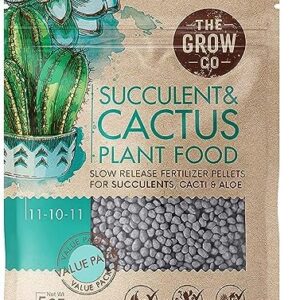Have you ever thought about bringing the beauty of the outdoors inside your home? Well, look no further than indoor plants! Not only do they add a touch of greenery to your space, but they also have numerous health benefits and can even improve your mood.
If you’re new to the world of indoor plants, don’t worry – we’ve got you covered with this comprehensive guide to everything you need to know about caring for these leafy friends.
Choosing the Right Plant for Your Space
Before you start filling your home with plants, it’s important to consider the conditions of your space. Do you have plenty of natural light, or is your home on the darker side? Some plants require lots of sunlight, while others can thrive in low-light environments.
If you have bright, sunny windows, consider plants like succulents, cacti, or spider plants. These varieties will thrive in well-lit spaces and require minimal maintenance.
For those with less sunlight, opt for plants like pothos, snake plants, or peace lilies. These plants are more tolerant of low-light conditions and can still thrive in spaces with limited natural light.
Caring for Your Indoor Plants
Once you’ve chosen the perfect plant for your space, it’s important to know how to care for it properly. Here are a few basic tips to help you keep your indoor plants healthy and thriving:
1. Watering: One of the most common mistakes people make with indoor plants is overwatering. While it’s important to keep your plants hydrated, it’s equally important not to drown them. Make sure to let the soil dry out between waterings to prevent root rot.
2. Light: Different plants have different light requirements, so be sure to place your plants in a location where they will receive the appropriate amount of sunlight. Rotate your plants occasionally to ensure they are getting even light exposure on all sides.
3. Temperature: Most indoor plants prefer temperatures between 65-75 degrees Fahrenheit during the day and slightly cooler temperatures at night. Avoid placing your plants near drafts or heating vents, as extreme temperature fluctuations can stress them out.
4. Humidity: While most indoor plants can adapt to indoor humidity levels, some plants, like tropical varieties, may benefit from a little extra moisture. To increase humidity, mist your plants occasionally or place a humidifier near them.
5. Fertilizing: Indoor plants don’t require as much fertilizer as outdoor plants, but it’s still important to feed them occasionally to replenish nutrients in the soil. Choose a balanced, water-soluble fertilizer and follow the instructions on the label.
Common Indoor Plant Pests and Diseases
Despite your best efforts, indoor plants can still fall victim to pests and diseases. Here are a few common issues to look out for:
1. Fungus gnats: These tiny insects are attracted to moist soil and can quickly multiply if left unchecked. To get rid of fungus gnats, allow the soil to dry out between waterings and consider using sticky traps to catch adult gnats.
2. Mealybugs: These white, cottony insects can infest your plants and suck out the sap, causing leaves to yellow and wilt. To treat mealybugs, remove them manually with a cotton swab dipped in rubbing alcohol or use insecticidal soap.
3. Powdery mildew: This fungal disease appears as a white powdery substance on plant leaves and stems. To prevent powdery mildew, ensure good air circulation around your plants and avoid overcrowding them.
Remember, early detection and intervention are key to preventing pests and diseases from spreading to other plants. If you notice any signs of trouble, act quickly to protect your indoor plant collection.
Benefits of Indoor Plants
Not only do indoor plants add a touch of nature to your home décor, but they also offer numerous health benefits. Studies have shown that indoor plants can improve air quality by filtering out toxins and increasing oxygen levels.
Plants can also help reduce stress and anxiety, improve cognitive function, and boost creativity. Simply caring for and nurturing a living thing can have a positive impact on your mental well-being.
In addition, plants can help regulate humidity levels in your home, making the air more comfortable and preventing issues like dry skin and static electricity.
So, whether you’re a seasoned plant parent or just starting your indoor plant journey, there’s no denying the benefits of bringing a little greenery into your home. Not only will your space look more inviting and lively, but you’ll also enjoy the countless health benefits that indoor plants provide.
In conclusion, caring for indoor plants doesn’t have to be complicated. With a little bit of research and a whole lot of love, you can create a lush and thriving indoor garden that will brighten up your space and improve your quality of life. So go ahead, embrace the greenery, and let nature flourish inside your home. Happy planting!






